This sequence is designed for people with mild to moderate non-specific lower back pain. Some of the exercises may not be suitable or contraindicated for people with spinal discopathies such as spinal fusion, herniation, spondylosis, spondylolisthesis, spinal stenosis and severe osteoarthritis. Please consult with your doctor before doing this program.
This practice is designed to be done in a chair.
Some guidelines for practice:
- Stay within a tolerable range of sensation. It is normal to feel some tension or discomfort as you explore stretching into muscles that are tight or in spasm. However, feel free to skip any movements or postures that are too intense or create sharp pain. If you imagine an intensity scale of 1-10 (1 being very mild sensation levels, 10 being very intense), we recommend staying below a level 6.
- If you have taken medication for your back pain such as painkillers or anti-inflammatories be aware that this can dull your sensitivity to pain. It is therefore very important to stay within a suitable level of intensity and sensation so as to avoid over-doing it.
- Be mindful of your breathing as you practice, as this is the key mechanism for helping to relax the body and reduce tension. Try to stay connected to a relaxed abdominal breath throughout. The belly should gently rise as you breathe in, and fall as you breathe out.
- This practice is gentle enough that it can be done 2-3 times throughout the day.
1. Chair mountain pose with belly breathing
- Sit upright in a chair. Bring your head over your ribcage, ribcage over your pelvis and sit directly on top of your sitting bones.
- Place your feet flat on the floor, hip width apart with the heels under the knees.
- Place your hands on your thighs, palms down and relax your shoulders.
- Sense that your lower back has a gentle neutral curve to it, neither overarched or tucked under and rounded. Imagine a string gently lifting you up from the crown of the head.
- Breathe deeply into your lower ribs and abdomen. As you inhale, feel the abdomen, sides of the waist and lower back gently expand outwards. As you exhale feel the abdomen, waistline and lower back relax and slightly hug inwards.
- You can place a hand on your lower belly if it helps you to connect to the movement of the breath.
- Continue for 5-10 relaxed breaths.
2. Seated cat cow
- Start in Chair Mountain pose.
- On an inhale, gently tip to the front of your sitting bones, allowing your lower back to slightly arch inwards. Feel your chest lift and expand, as the shoulder blades move closer together.
- On an exhale, gently rock to the back of the sitting bones, feeling the tailbone tuck slightly and the lower back begin to round. Feel your chest draw back, lower abdominals firm back towards the spine, and your upper back and shoulders round.
- Continue this rocking back and forth movement on your sitting bones 5-10 times.
3. Seated arm raises
- Start in Chair Mountain pose.
- Inhale reach your arms forwards and over your head. Keeping the hands and arms shoulder width apart. Exhale as you lower your arms forwards and down by your sides. Repeat 5 times.
- Then, inhale, reach your arms out to the sides and overhead as if drawing a big circle with your arms. Exhale lower your arms out to the sides and down by your hips.
- Focus on moving into the upper back and shoulders, avoid overarching the lower back or pushing the front lower ribs forwards, instead keep the lower back neutral.
- Repeat 5 times.
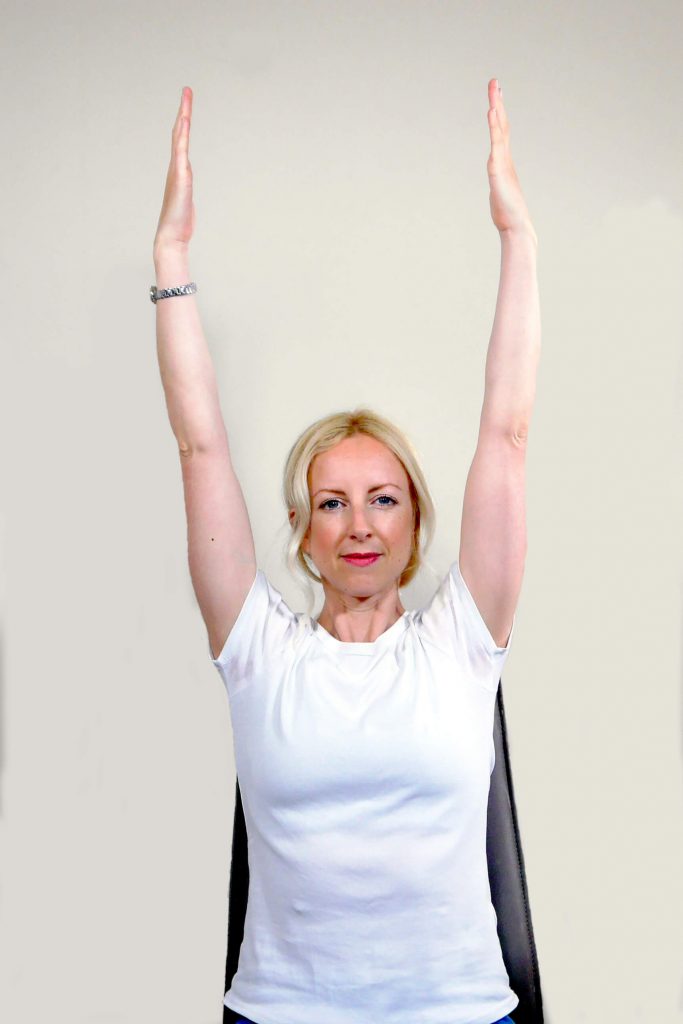
4. Seated forward bend
- Start in Chair mountain pose with your feet and knees slightly wider than hip-width.
- Inhale sit tall, and as you exhale slowly hinge forwards from your hips. To start, explore just resting your elbows or forearms on your thighs. Try to avoid overly rounding into your spine as you come forwards, keeping as much length in the front of the body as you bend forwards. If it feels OK to do so you can continue to slide your hands down your legs towards your shins, ankles or the floor. Do not push or force the movement, instead work to find your comfortable end range of motion.
- Hold the forward bend position for 2-3 deep breaths.
- Inhale slowly rise back up to sitting.
- Repeat 3 times in total.
5. Seated wind-removing pose
- Start in Chair Mountain pose.
- Keeping your back straight, lean back slightly lifting your left knee in towards your chest. Hold in front or behind the knee with both hands.
- Inhale, and as you exhale, explore pulling the knee closer in towards the left shoulder/chest area. Hold the stretch for 5 breaths and then switch legs.
- Try to keep the back as straight as possible, avoid overly rounding or hunching through your spine.

6. Seated hamstring stretch
- Start in Chair Mountain pose with your hips close to the edge of the chair seat.
- Straighten your right leg out in front of you. Flex your right toes up towards the ceiling. Tone and engage the muscles on the front of the right thigh.
- Inhale sit tall, and as you exhale hinge forwards from your hips, keeping your back straight.
- You can rest your hands on your left knee for support.
- Feel the stretch in the back of the right leg.
- Hold for 5 breaths and then switch legs.
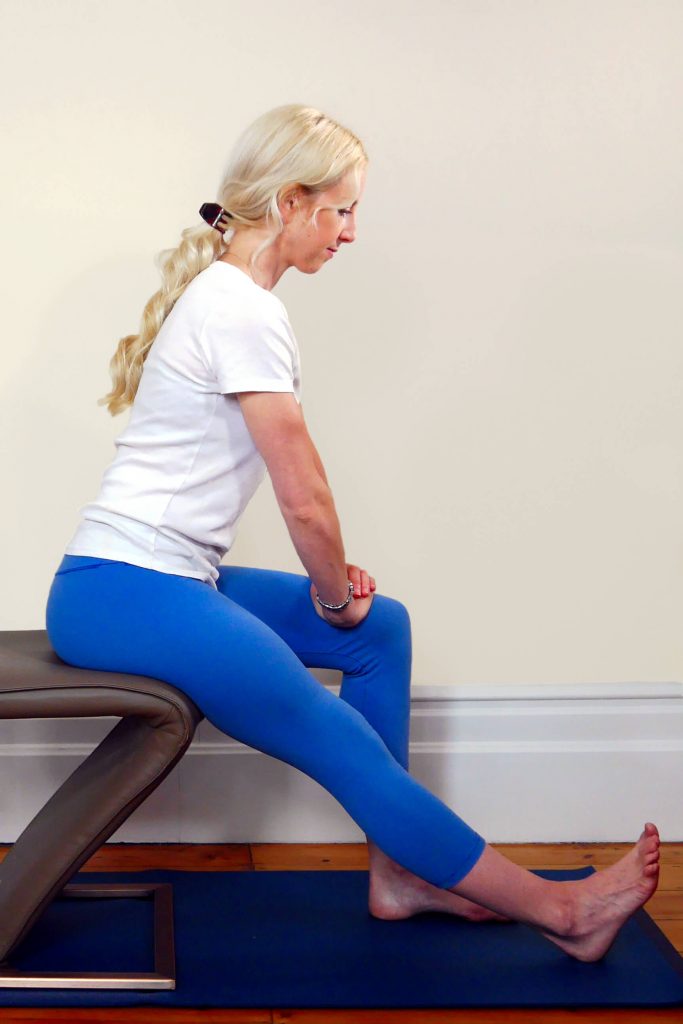
7. Seated spinal twist
- Start in Chair Mountain pose.
- Inhale sit tall, exhale slide your right hand to the back of the chair and bring your left hand to your outer right knee.
- Inhale again lengthening up through the crown of the head. Exhale turn your chest around to the right. Keep your naval, hips and legs facing forwards, focusing the twist into the middle/upper back. Look over your right shoulder.
- Hold for 5 breaths and then on an exhale release the twist. Switch sides.
- To progress this pose, option to cross the right thigh on top of the left thigh and then twist to the right (not shown). This will create a deeper stretch down the back of the right thigh and hip.
8. Seated side bend
- Start in Chair Mountain pose.
- Take your right hand to hold onto the bottom of the chair (alternatively you can sit on your right hand).
- Inhale reach your right arm up towards the ceiling.
- Exhale, side bend your spine to the left. Keep your right hip anchored onto the chair seat.
- Hold for 5 breaths and then switch sides.

9. Seated pigeon pose
- Start in Chair Mountain pose.
- Take your right thigh on top of your left thigh, sitting cross-legged. Hold onto the right thigh and allow the right hip to release down onto the chair. If you feel a strong stretch on your right outer hip you can remain here for 5 breaths.
- To progress the pose, slide your right ankle above your left knee. Allow your right knee to open out towards the side, flexing your right ankle.
- Sit as tall as you can – avoid slumping or rounding the lower back.
- To go deeper into the pose, there is an option to lean forwards hinging at the hips. Keep your back straight.
- Hold for 5 breaths and then switch legs.
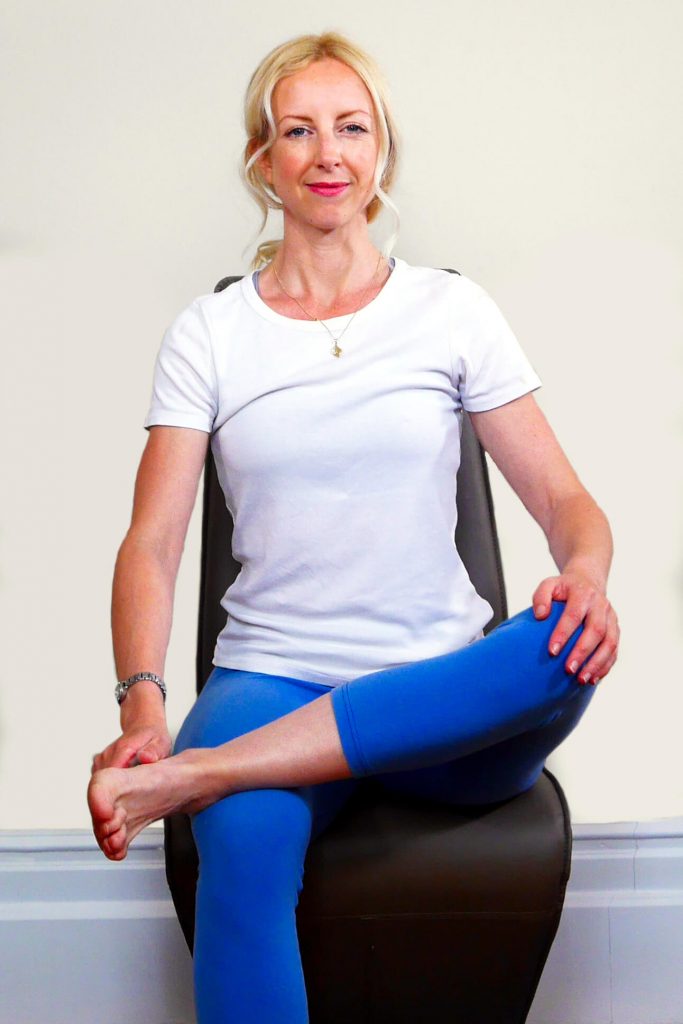
10. Seated hipflexor stretch
- Sit towards the right side of the chair so that your left thigh is on the chair seat with the left foot firmly grounded on the floor.
- Stretch your right leg back into a lunge with the toes tucked under.
- Square your hips forwards, drawing your lower abdominals gently in and up and lengthening your lower back and tailbone down towards the floor.
- Allow your right knee to reach down towards the floor underneath the right hip to feel a stretch in the front of the right thigh and hip.
- You can bring your hands to your hips or option to reach the right arm up towards the ceiling, lengthening your right fingers away from your right knee.
- Hold for 5 deep breaths and then switch sides.
- To progress this stretch, there is an option to side bend a little over to the left (if the right leg is back in the lunge). This will further increase the stretch into the right side of the lower back.
11. Chair downward-facing dog
- Come to stand behind your chair, bringing your hands to the back of the chair.
- Step your feet back, hinging from your hips and moving your buttocks back as you lower your spine towards the floor.
- Place your feet hip width apart and parallel with your toes, ankles, knees and hips all pointing forwards.
- Aim to create a 90 degree hinge in your hips, keeping your back straight. If your back rounds, explore bending your knees, or keeping your chest up a little higher.
- Hold for 5 deep breaths. Repeat 1 more time.
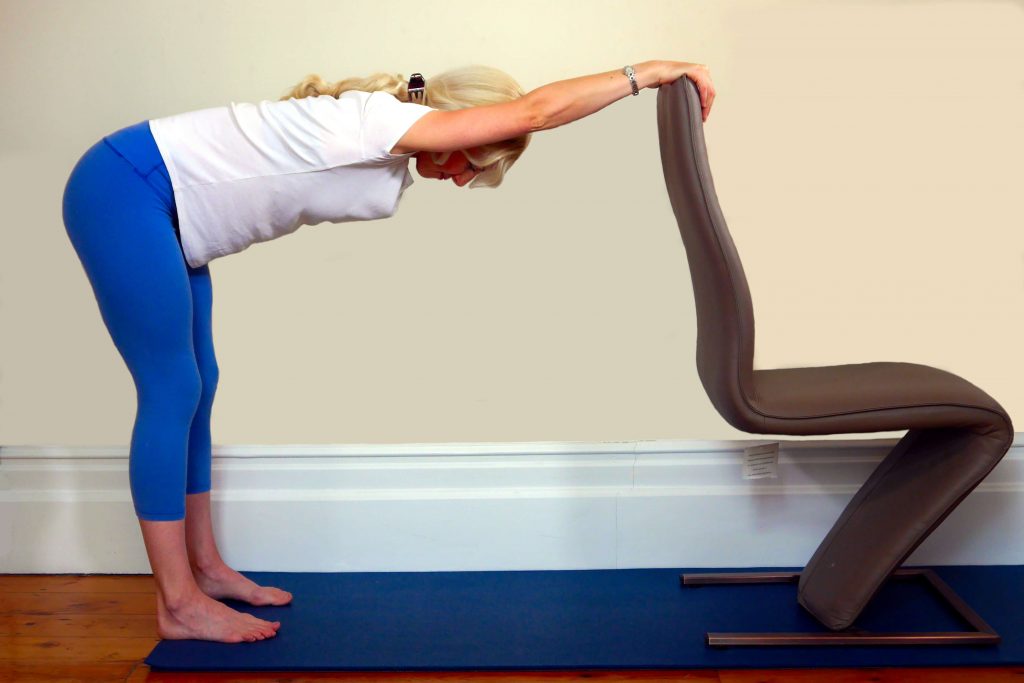
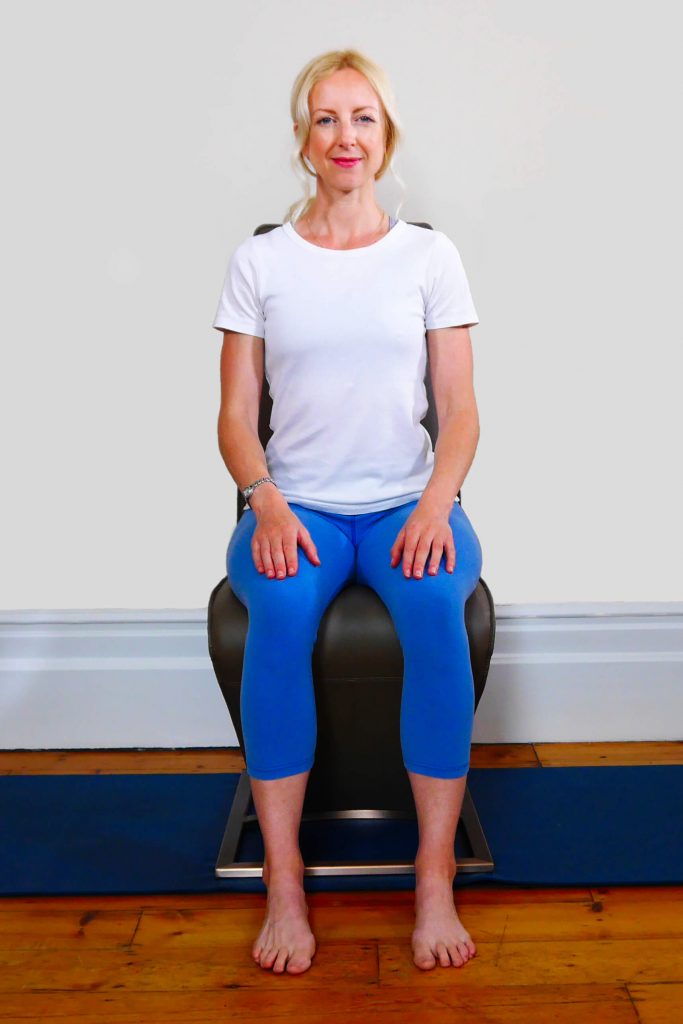
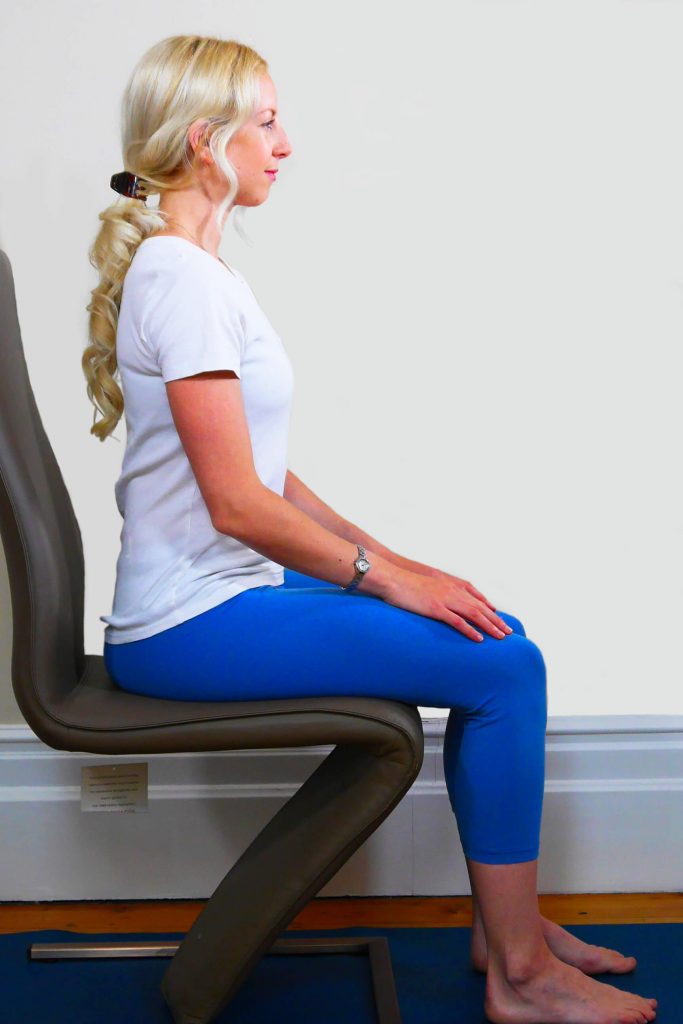
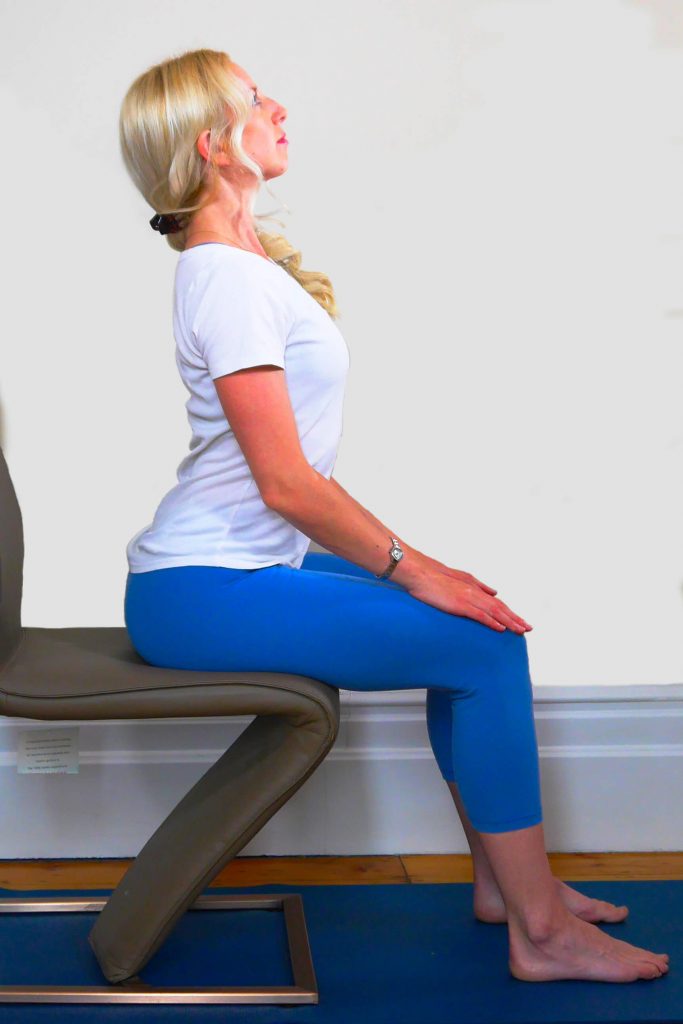


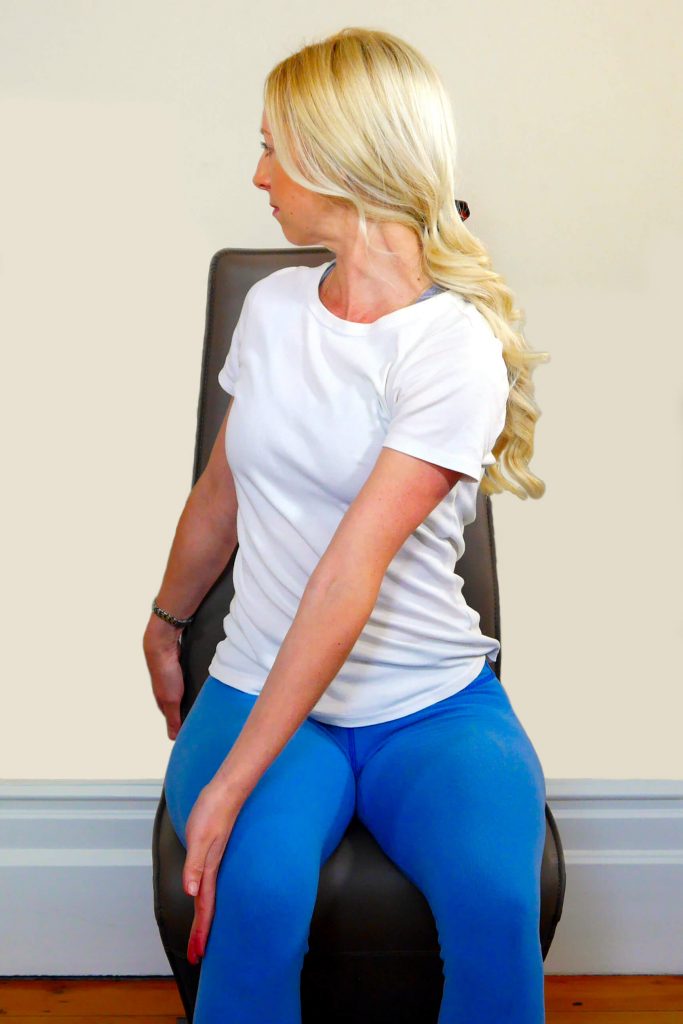
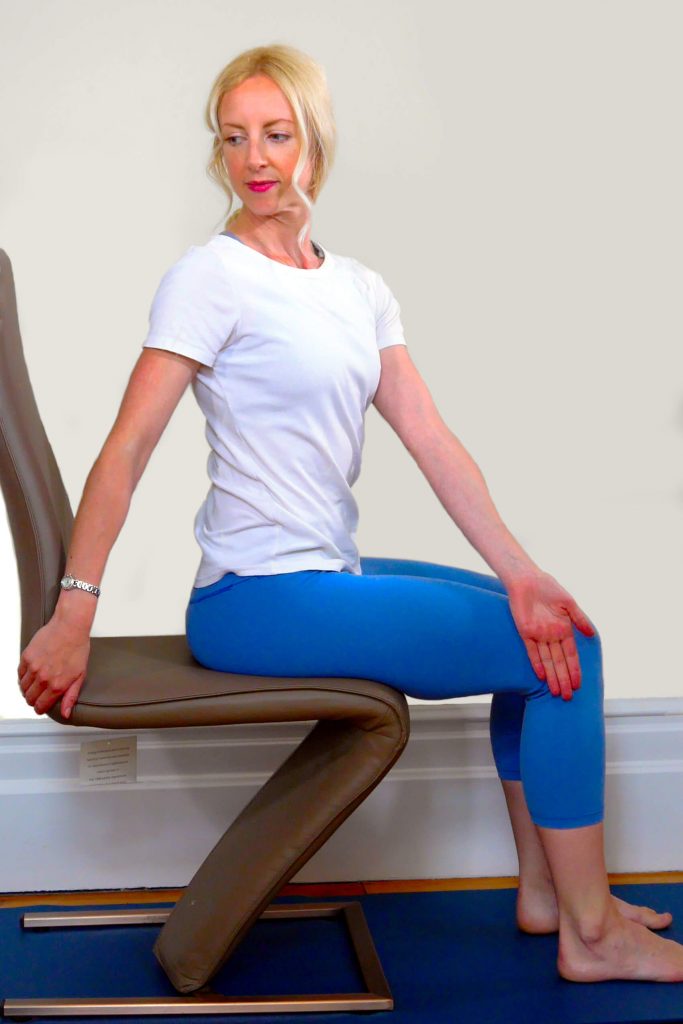
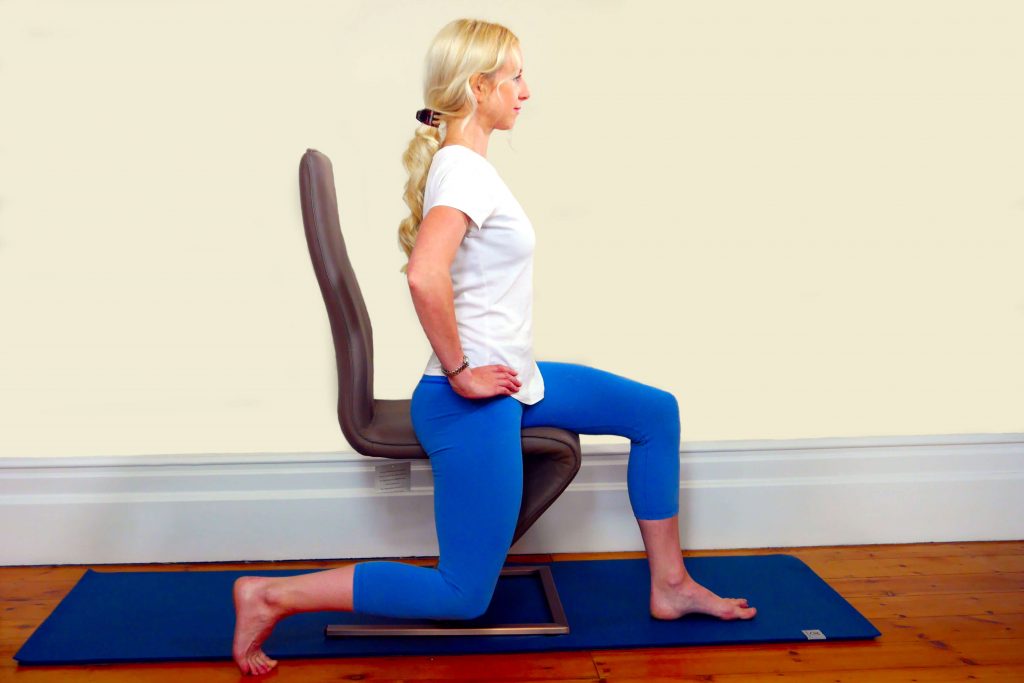

Leave a Reply